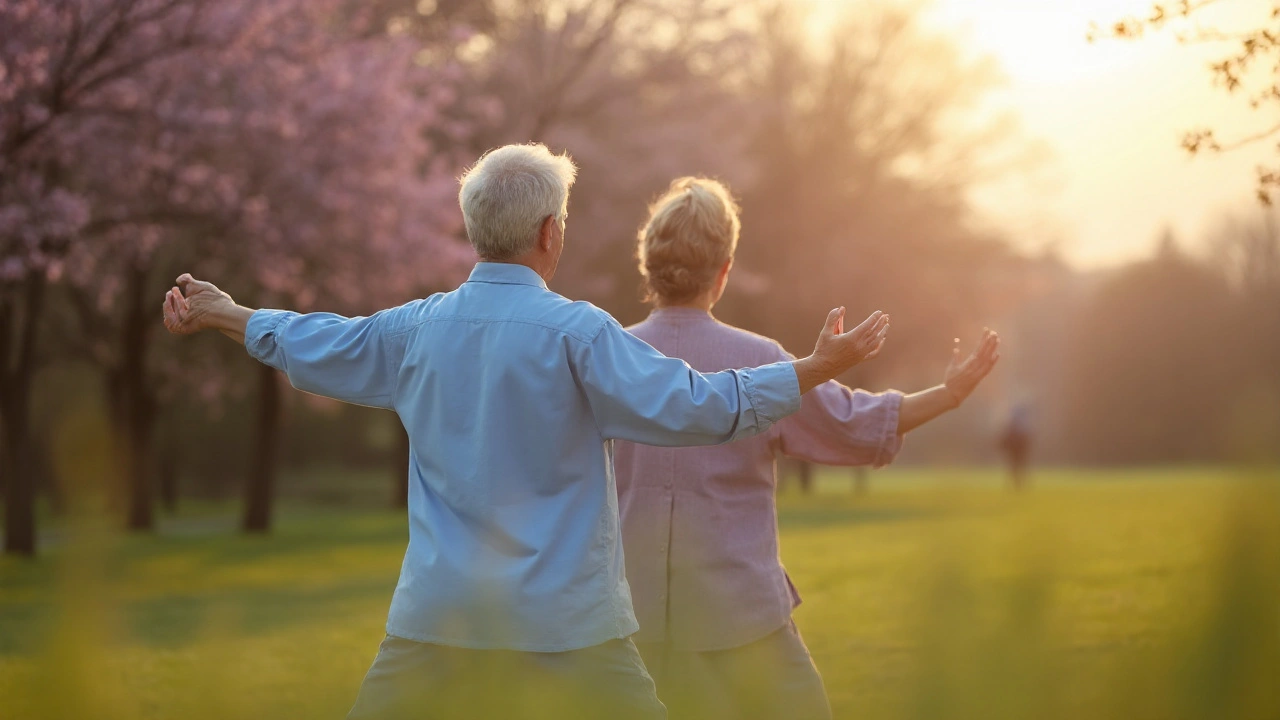
Discover why Tai Chi is a safe, low‑impact workout that improves bone density, balance and confidence for people with osteoporosis. Learn the science, practical steps and how it stacks up against other exercises.
If you’ve heard that Tai Chi is great for balance, you might be surprised to learn it also supports bone health. For people with osteoporosis or low bone density, the slow, controlled movements can add gentle stress to the skeleton, which encourages bone remodeling without the risk of high‑impact injuries.
When you shift weight from one leg to the other, the muscles pull on the bones and send tiny signals that tell bone cells to stay strong. Tai Chi routines repeat these weight‑shifts many times, creating a low‑level, consistent load that’s safe for fragile bones. Studies show that regular practice can slow bone loss and even improve bone density in the hips and spine.
Beyond the mechanical benefits, Tai Chi reduces the chance of falls. Better balance means fewer fractures, which is a major concern for anyone with osteoporosis. It also lowers stress hormones that can weaken bone over time, so you get a double‑win: stronger bones and a steadier mind.
First, talk to your doctor or physical therapist. They can confirm that Tai Chi is a good fit for your condition and suggest any modifications. When you start, look for a beginner class that focuses on basic forms—no jumping or fast turns. A typical session lasts 30‑45 minutes and includes warm‑up, slow flowing moves, and a cool‑down.
Wear flat, supportive shoes and practice on a firm but not hard surface. If you have joint pain, keep the range of motion comfortable; you don’t need to stretch to the limit. A good rule of thumb: move until you feel a gentle pull, not pain.
Try these three beginner moves that target the legs and spine:
Do each move for 1‑2 minutes, breathing deeply. Consistency matters more than speed, so aim for 3‑4 sessions a week.
As you progress, add more forms that involve gentle squats and arm extensions. These add extra loading to the hips and upper spine, giving your bones a broader workout.
Remember to pair Tai Chi with other osteoporosis care: calcium‑rich diet, vitamin D, and any prescribed medication. The combination maximizes bone health while keeping you active and confident.
Give Tai Chi a try for a month and track how you feel. Many people notice better balance, less stiffness, and a calmer mood. Those subtle gains add up to fewer falls and stronger bones over time.

Discover why Tai Chi is a safe, low‑impact workout that improves bone density, balance and confidence for people with osteoporosis. Learn the science, practical steps and how it stacks up against other exercises.